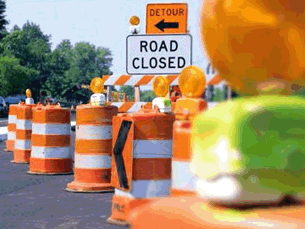When it comes to state transportation policy, there can be little doubt that North Carolina offers a model not to be emulated. Unfortunately, numerous scandals, problems, and challenges have continued to intermingle transportation policy with politics.
Problems in Allocation of Resources
Because North Carolina has extensive road needs but limited funds to address those needs, it must make expenditures in the most efficient manner. It is clear that the state’s traditional model — based on politics, and not need — has failed. Nor is the resource allocation under the Highway Trust Fund — determined by a politically designed distribution formula — compatible with the economic realities of North Carolina. Based on a Locke Foundation analysis, rural regions recently have received a greater proportion of DOT funds than is justified by estimated highway use.
We have created a Highway Use Index based on each county’s share of not only state population (which the current equity formula also uses), but also the number of registered vehicles and the number of fuel pumps in each county (a proxy for fuel sales and usage). From 1992-96 urban counties in North Carolina received just over 60 percent of DOT spending, while the Highway Use Index would have recommended 65.5 percent.
Distribution of spending among the seven DOT regions has also been out of kilter based on the Highway Use Index. Generally speaking, over the period 1992-96 the counties in the northeastern and western parts of the state have been subsidized by the fast-growing counties of the Piedmont.
In fact, the current DOT regions should be reorganized to better reflect the state’s economic regions. For instance, Mecklenburg County is grouped with distant Chatham County, but not with adjacent Gaston County. And Orange County is included in one region, while the other Triangle counties of Wake and Durham lie across the line in another.
Consider another problem: About 6.5 percent of Highway Trust Fund distributions goes to paving dirt roads, while the population density along the next dirt road paved has declined substantially. The current standard is a low 50 cars per day. In the meantime, the state’s road maintenance is wholly inadequate, as demonstrated by various audits and studies. There is a current backlog of more than $400 million.
Poor budgetary and accounting practices at DOT account for much of the gap between DOT commitments and available funds. Projects have been budgeted with no adjustment for future inflation and other cost overruns. It is no wonder that the Highway Trust Fund projects projected in 1989 to cost around $7 billion have more recently been pegged at almost twice that.
Nine years ago, the public was told that the Highway Trust Fund/TIP program could complete certain specific road projects in 13.5 years. Today, a better estimate is closer to twice that. The DOT gets substantially more money (via “temporary” additional gas taxes) until it completes the road projects outlined in the Highway Trust Fund.
It is in DOT’s interest to postpone the completion of the Trust Fund program as long as possible so as to collect extra tax revenue as long as possible. To its credit, however, the current DOT administration has begun to address these problems, but more needs to be done. A good start would be to reduce or eliminate the more than $310 million in annual diversions from the Highway Fund and the Highway Trust Fund.
Another way to control costs at DOT would be to expand the Department’s current privatization programs, especially in maintenance, planning, and other field operations. Other states provide models that we could follow.
Use Road Money for Roads
Though it may seem obvious to use gasoline and motor vehicle taxes for highways, the Highway Fund and Highway Trust Fund often have been viewed as fair game to pay for other programs.Every dollar diverted from the DOT is a dollar that is not spent on road maintenance, obsolete bridge replacement, dirt road paving, or street widening to meet the traffic demands of today and tomorrow. Our children deserve no less than such conditions as they travel to the state’s illustrious school of the future.
The authors of Road & Track propose that more than $410 million a year in additional funds be spent on road maintenance, bridge maintenance, and completing TIP projects such as urban loops.No new taxes are needed to meet these needs. Instead, budget savings are recommended from reductions or eliminations of fund diversions, cutting in half the budget for secondary road paving, reducing administrative expenses, and making greater use of privatization, public-private partnerships, and tollways.
Transit Is Not the Answer to Traffic Problems
Directing scarce resources to transit means less investment in roads to reduce congestion and to improve safety. Transit proponents ignore some obvious facts: the dominant form of transportation in North Carolina’s urban areas is the car. Even after the introduction of pricey transit systems, the dominant form of transportation in North Carolina’s urban areas will remain the car until a more advanced technology comes along. The experience of other cities also shows that transit, whether bus or rail, will never have more than a tiny fraction of the total transportation market.
Explore Alternative Methods to Control Congestion
While automobiles are the primary means by which people travel today, there clearly are limits to road building. Congestion pricing, toll roads, and mixed use zoning all offer incentives for individuals to change their behaviors while reducing congestion at a low cost. With more direct involvement by users of services such as roads, the true value of any particular roadway can be more closely estimated.
Finally, without ways for users to have a direct impact on their transportation options, the only alternative is for citizens to focus more on the political process to achieve their aims. As many observers would agree, the politicization of roads has not been for the better in North Carolina.


